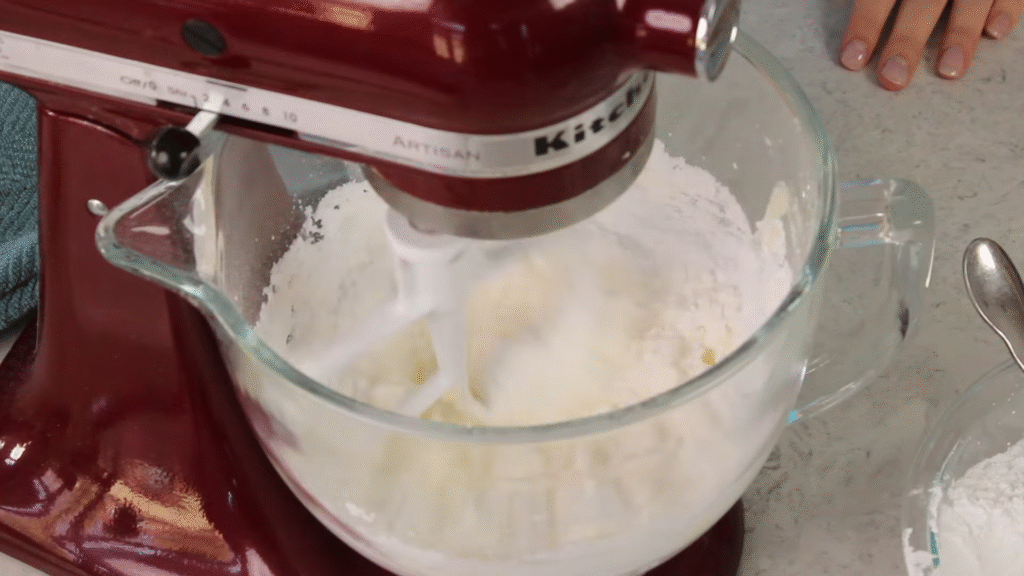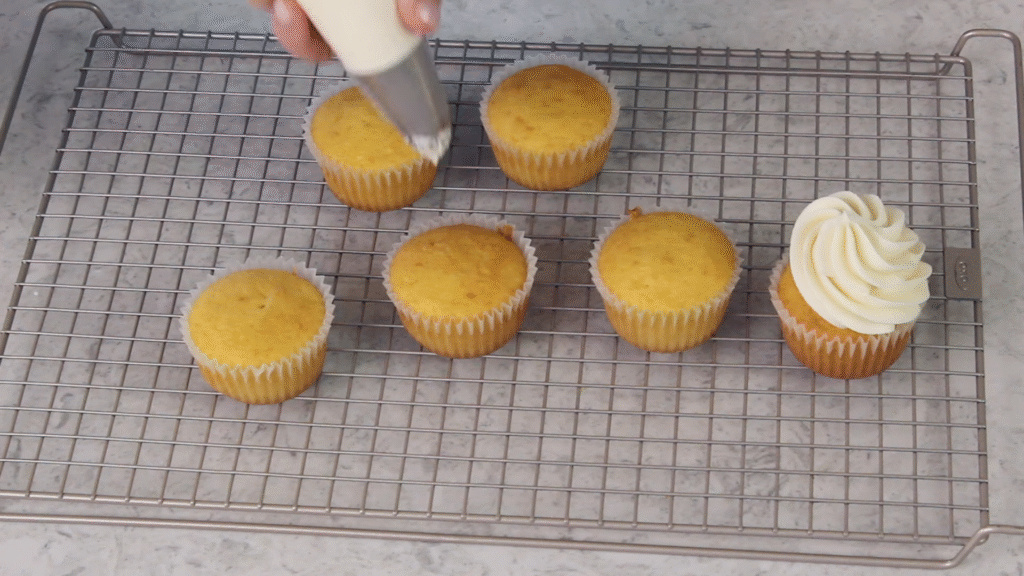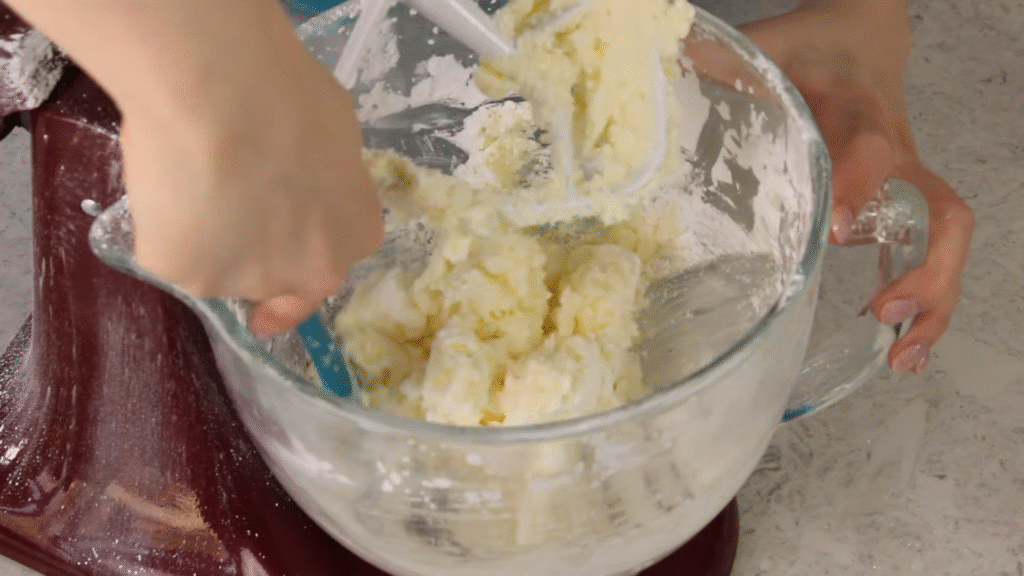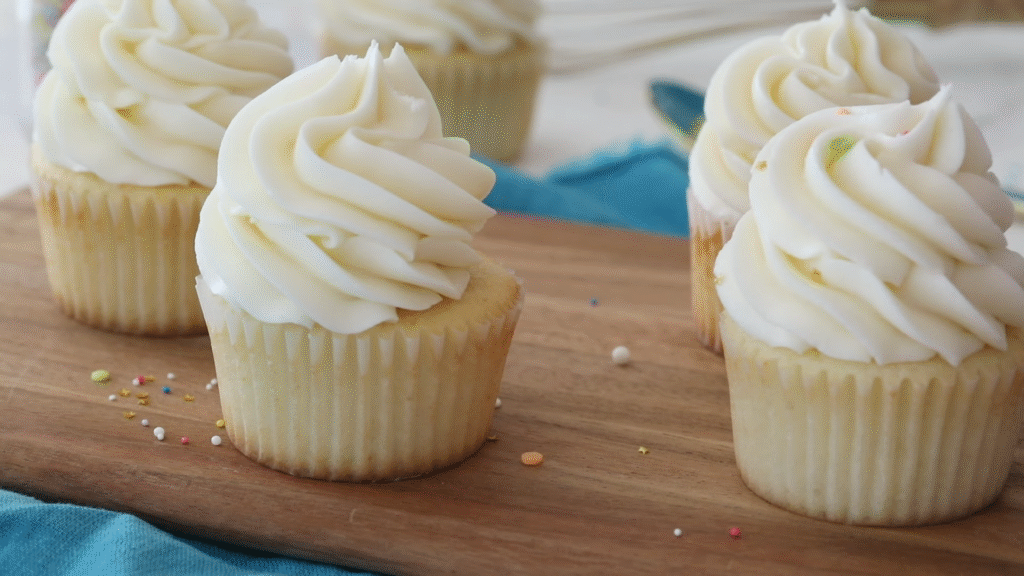I’ve tried so many frosting recipes, and most of them were either too sweet, too buttery, or just not right. One day I started experimenting in my kitchen, and this simple vanilla frosting became my go-to recipe.
It’s creamy, smooth, not overly sweet, and it actually makes cakes and cupcakes taste better instead of overwhelming them.
I’m sharing it with you because I know you’ll love it as much as I do.
Why This Vanilla Frosting Works

The secret is balance. I use just the right amount of butter and sugar so it’s creamy without being heavy. A splash of milk makes it smooth and spreadable, and vanilla extract gives that classic flavor we all love.
It’s the kind of frosting that tastes good straight from the spoon (don’t ask how I know).
Ingredients You’ll Need
You don’t need anything fancy. Just 5 simple ingredients that you probably already have at home:
- Butter – unsalted is best, room temperature so it mixes easily.
- Powdered sugar – gives sweetness and that smooth texture.
- Milk or heavy cream – for creaminess and the perfect consistency.
- Vanilla extract – pure vanilla makes a big difference.
- Pinch of salt – balances the sweetness.
That’s it. Simple and budget-friendly.
Step-by-Step Instructions

Step 1: Beat the Butter
Start by beating the butter with a hand mixer or stand mixer for about 2–3 minutes. You want it light, pale, and fluffy. This is what makes the frosting smooth.
Step 2: Add Powdered Sugar Slowly
Add powdered sugar one cup at a time. Mix slowly first (so it doesn’t fly everywhere), then speed it up until it blends well. Keep scraping the sides of the bowl so nothing sticks.
Step 3: Add Milk and Vanilla

Pour in 2–3 tablespoons of milk (or cream) and a teaspoon of vanilla extract. Beat again until it’s creamy and spreadable.
Step 4: Adjust if Needed
Too thick? Add a tiny bit more milk. Too thin? Add a little more sugar. Taste it—yes, taste it! If it feels too sweet, add just a pinch of salt.
Tips for the Best Vanilla Frosting
- Room temp butter is key – cold butter won’t mix well.
- Don’t skip the salt – it makes the sweetness taste better.
- Whip it longer – extra beating makes it fluffier and lighter.
- Double the batch – it stores well, so make more if you love frosting.
How to Use This Frosting
This vanilla frosting goes with almost anything:
- Cupcakes
- Layer cakes
- Cookies
- Brownies
- Even as a dip for fruit
It spreads easily, but you can also pipe it with a piping bag if you want those pretty swirls.
Storage and Make-Ahead Tips
- Fridge: Store in an airtight container for up to a week. Let it sit at room temperature and re-whip before using.
- Freezer: Yes, you can freeze it! Store up to 2 months. Thaw in the fridge overnight and whip again.

FAQs About Vanilla Frosting
Q: Can I use salted butter instead of unsalted?
Yes, but skip the pinch of salt.
Q: Can I make this without a mixer?
You can, but it will be tiring. A mixer makes it smooth and fluffy.
Q: How do I make it less sweet?
Add a little more butter and a pinch of salt to balance the sugar.
Q: Can I use this for decorating cakes?
Yes! Just make it slightly thicker by adding a bit more powdered sugar.
Q: Can I add colors or flavors?
Absolutely. Add food coloring for fun colors or swap vanilla with almond, lemon, or coconut extract.
